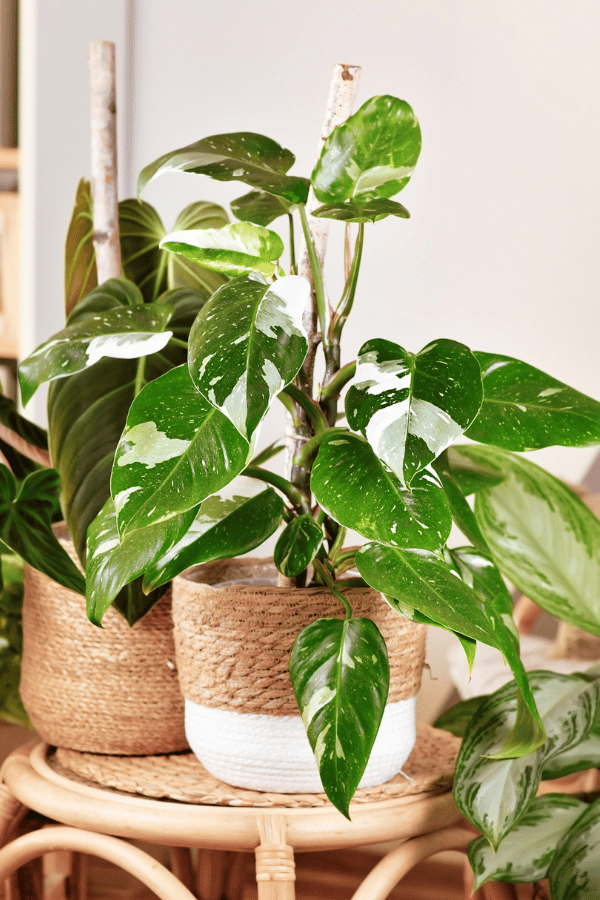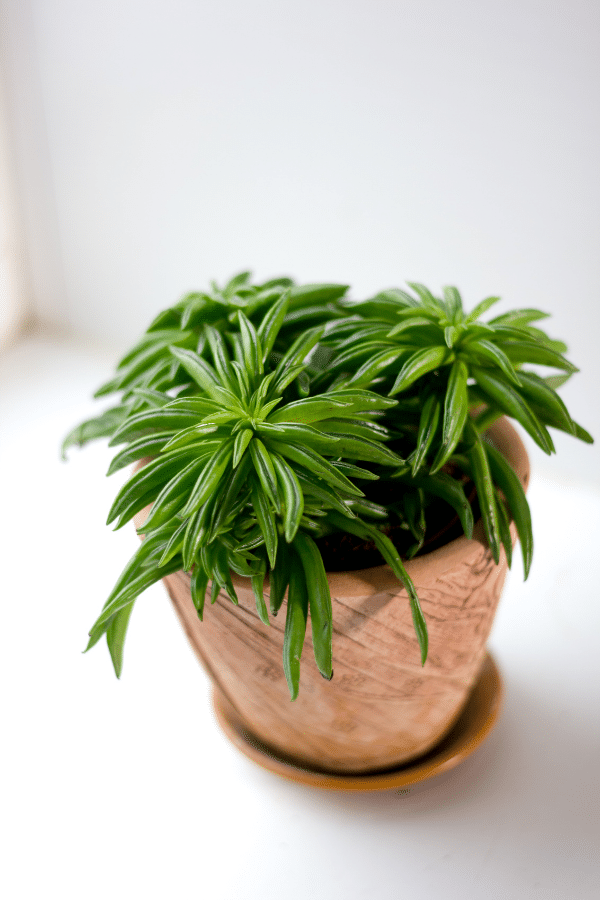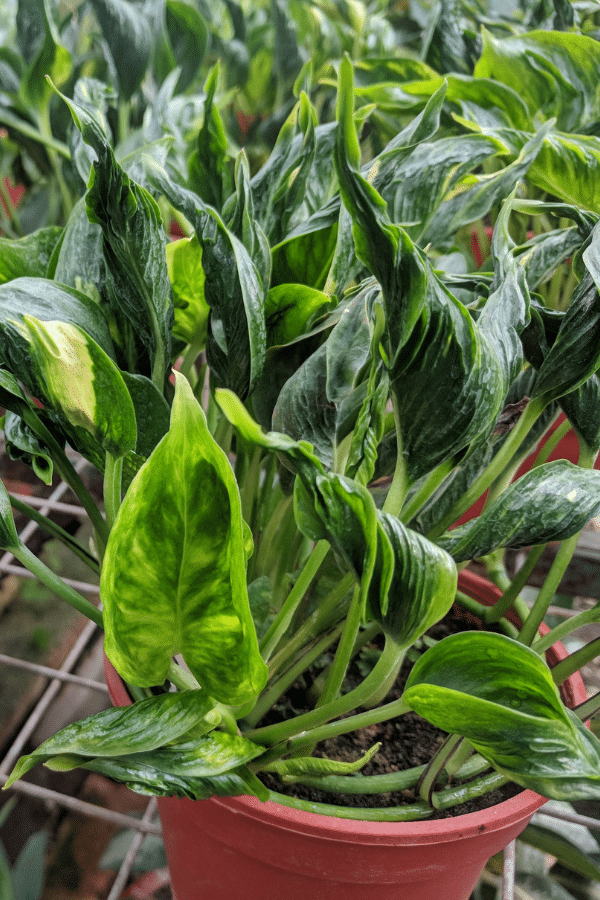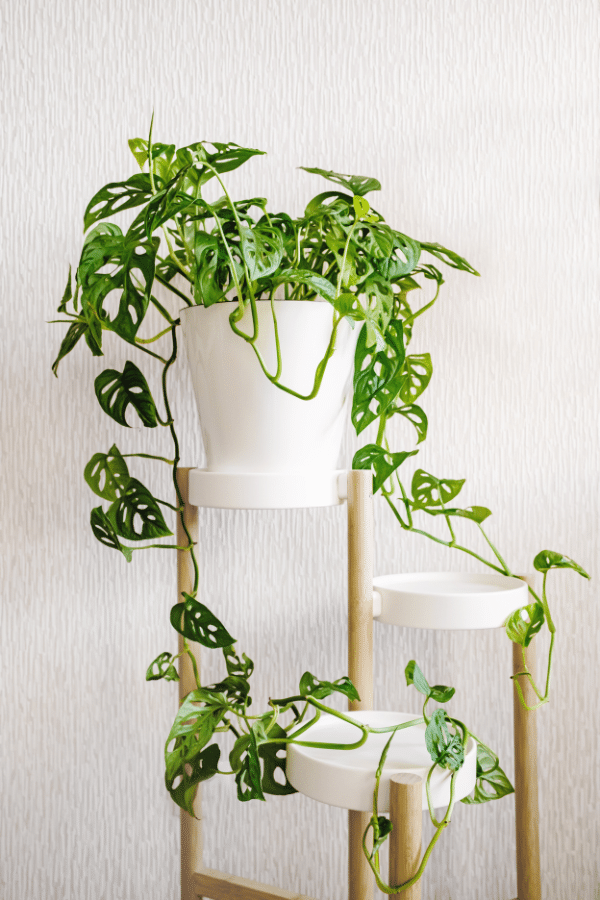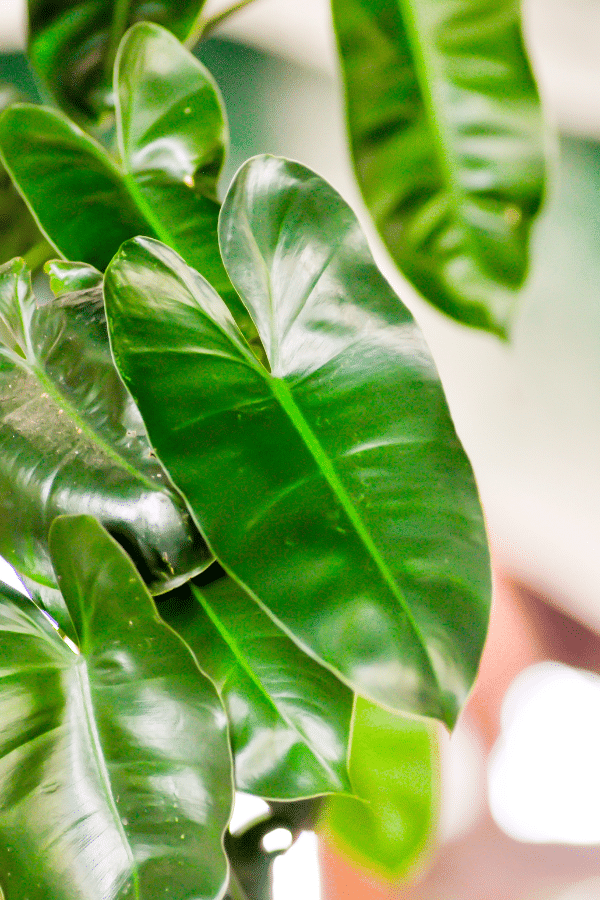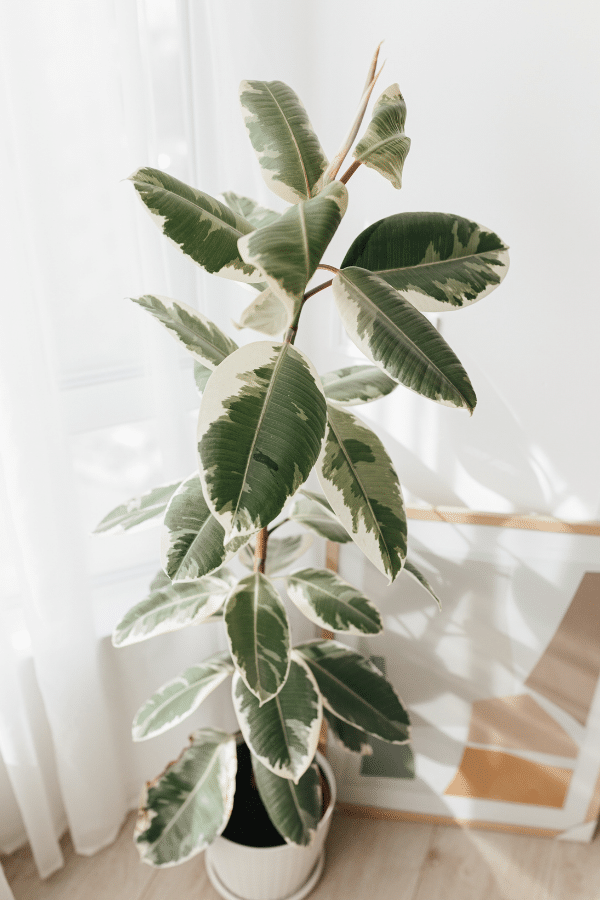Why Is My Pothos Droopy?
Pothos plants are a popular choice for houseplant parents, prized for their attractive trailing vines and ease of care. However, even the most well-cared-for pothos plants can sometimes droop, leaving parents wondering what they’re doing wrong. In this post, we’ll explore the most common reasons why pothos plants droop and what you can do to fix the problem.
Water Problems
Water is essential to the health of any plant. However, problems with watering can cause your pothos to droop, so it’s important to water your plants only when they are thirsty.
Underwatering
If your pothos is drooping and the soil feels dry to the touch, you likely need to water it more. Pothos plants like to be kept consistently moist but not soaking wet, so aim to water it once a week or whenever the soil feels slightly dry.
To water your pothos plant, thoroughly soak the soil until water drains from the bottom of the pot. If you can, take the plant to the sink and water it until water pours out from the drainage holes, then you can bring it back to its home. Otherwise, let the water collect in the saucer and then empty the water in the saucer in the sink.
Over Watering
Overwatering is another common cause of pothos drooping. If the soil constantly feels wet or saturated, it’s a sign that you’re giving the plant too much water. This can lead to root rot and other problems, so let the soil dry out between waterings.
To avoid overwatering your pothos, only water the plant when the top inch of soil feels dry to the touch. Make sure the pot has adequate drainage holes to allow excess water to escape, and don’t let the plant sit in standing water. If you notice any signs of root rot, such as blackened or mushy roots, cut away all damaged roots and repot your pothos as soon as possible.
It’s also important to note that the type of water you use can affect your pothos plant’s health. Tap water can contain minerals and chemicals that can build up in the soil over time and cause leaf tip burn or other problems. To avoid this, use distilled or filtered water, or let tap water sit out overnight to allow chlorine and other chemicals to dissipate before using it to water your pothos.
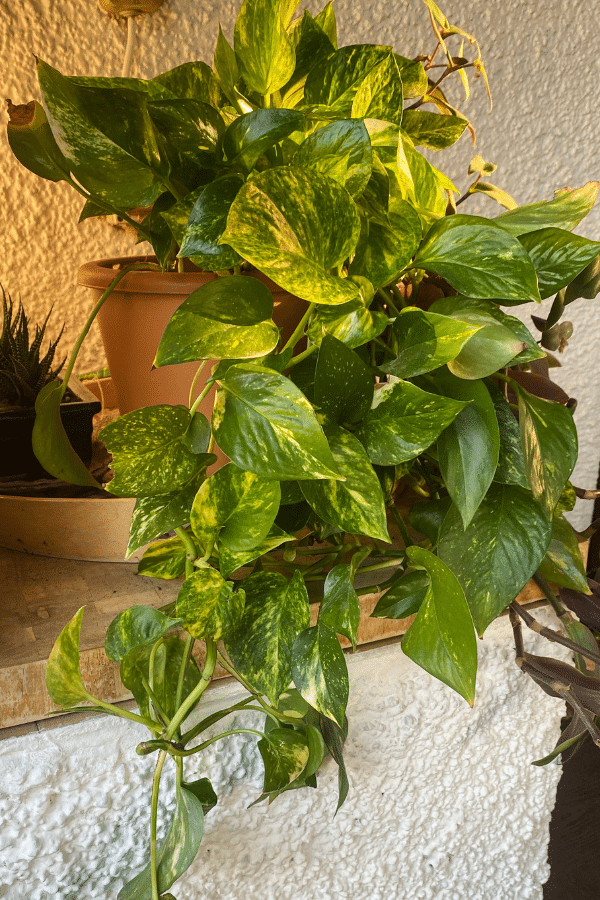
Low Humidity
Pothos plants are native to tropical rainforests, which means they thrive in warm, humid environments. If the air in your home is too dry, it can cause your pothos plant to droop or develop brown, crispy leaves. Buying a hygrometer to monitor the humidity levels in your home is a good idea for plant parents. Pothos love a humidity level of around 50-60%.
You can do a few things to increase the humidity around your pothos plant. The best option to increase humidity is to place a humidifier near the plant. Another option is to place a tray of water near the plant or fill a pebble tray with water and place the pot on top of it. As the water evaporates into the air, it will create a humid environment around the plant.
Sunlight Problems
If lighting is why your pothos leaves may be drooping, it’s important to know it can be too much sunlight or too little.
Too Much Sunlight
Too much direct sunlight can cause the leaves of pothos to curl, turn yellow, or develop brown spots. This can also cause the plant to lose moisture and droop. By placing your pothos plant in a bright, but indirect sunlight spot in your home, you can avoid this. You can also use a sheer curtain or blinds to filter the sunlight and protect your plant from direct rays.
Too Little Sunlight
Pothos are notoriously known for their low light attributes, however, too little light can negatively impact pothos and cause their leaves to droop. This is because the plant (like all plants) need sunlight to photosynthesize and produce energy. Your pothos may also start to develop smaller leaves and a spindly appearance if it’s not given enough light. To mend this, move your pothos plant to a brighter location, but still avoid exposing it to direct sunlight. If you don’t have a brighter location to move it to, you can use a grow light.
The amount of light your pothos plant needs may vary depending on the time of year. In the summer months, it may need more sunlight, while in the winter months, it may need less.
By providing your pothos plant with the right amount of sunlight, you can help to prevent it from drooping and promote healthy growth.
Needs Repotted
As your pothos plant grows, it may outgrow its current pot and need to be repotted. If you notice your pothos plant drooping, it could be a sign that it needs a bigger container.
To check if your pothos plant needs to be repotted, carefully remove it from its current pot and examine the roots. If the roots are circling around the bottom of the pot or poking out through the drainage holes, it’s time to repot.
When a plant becomes root-bound, it can cause the plant to become stressed and start to wilt or droop. Repotting your pothos plant will give it more room to grow and allow it to take in more water and nutrients.
To repot, choose a pot that has drainage holes and is two inches larger than the current one. Use a high-quality well-draining soil, repot, and water. After repotting, give your pothos plant some time to adjust to its new container.
Temperature Problems
Pothos plants prefer to be kept in temperatures between 65°F and 85°F (18°C to 29°C). Too cold or too hot of environments can cause extreme stress to your pothos plant, which can lead to a host of problems, including drooping.
Too Cold
Exposing your plant to temperatures below 50°F (10°C) can cause the leaves to turn yellow and droop. This is because the plant’s metabolism slows down in cold temperatures, making it more difficult to absorb water and nutrients. To avoid this, keep your pothos plant away from cold drafts and windows during winter months.
Too Hot
On the other hand, if your pothos plant is exposed to temperatures above 90°F (32°C), it can also cause the leaves to droop. The plant will droop because the high temperatures can cause it to lose moisture through transpiration more quickly than it can absorb water through its roots. To avoid this, keep your pothos plant in a shaded area during the hottest part of the day and ensure it gets enough water to stay hydrated.
Avoid exposing this plant to sudden temperature changes, and keep it in a consistent temperature range to avoid problems with this plant.
Pest Infestation
Pest infestations can be a common problem for pothos plants, and can cause them to droop and lose their leaves. Spider mites, aphids, mealybugs, and scale are some of the common insects that can infest pothos plants.
These pests feed on the sap of the plant, which can weaken it and cause it to droop.
If you notice signs of a pest infestation, such as small webs or discolored leaves, act quickly to prevent further damage. Look on the undersides of leaves and on the stems. Spray a combination of dish soap, water, and neem oil on the leaves to clean or use an insecticidal soap per the packages instructions. Repeat for weeks to end the pests life cycle.

